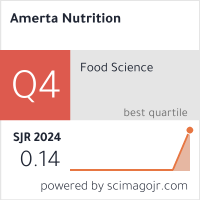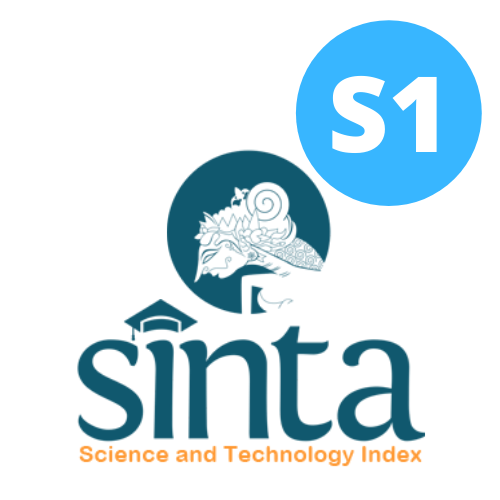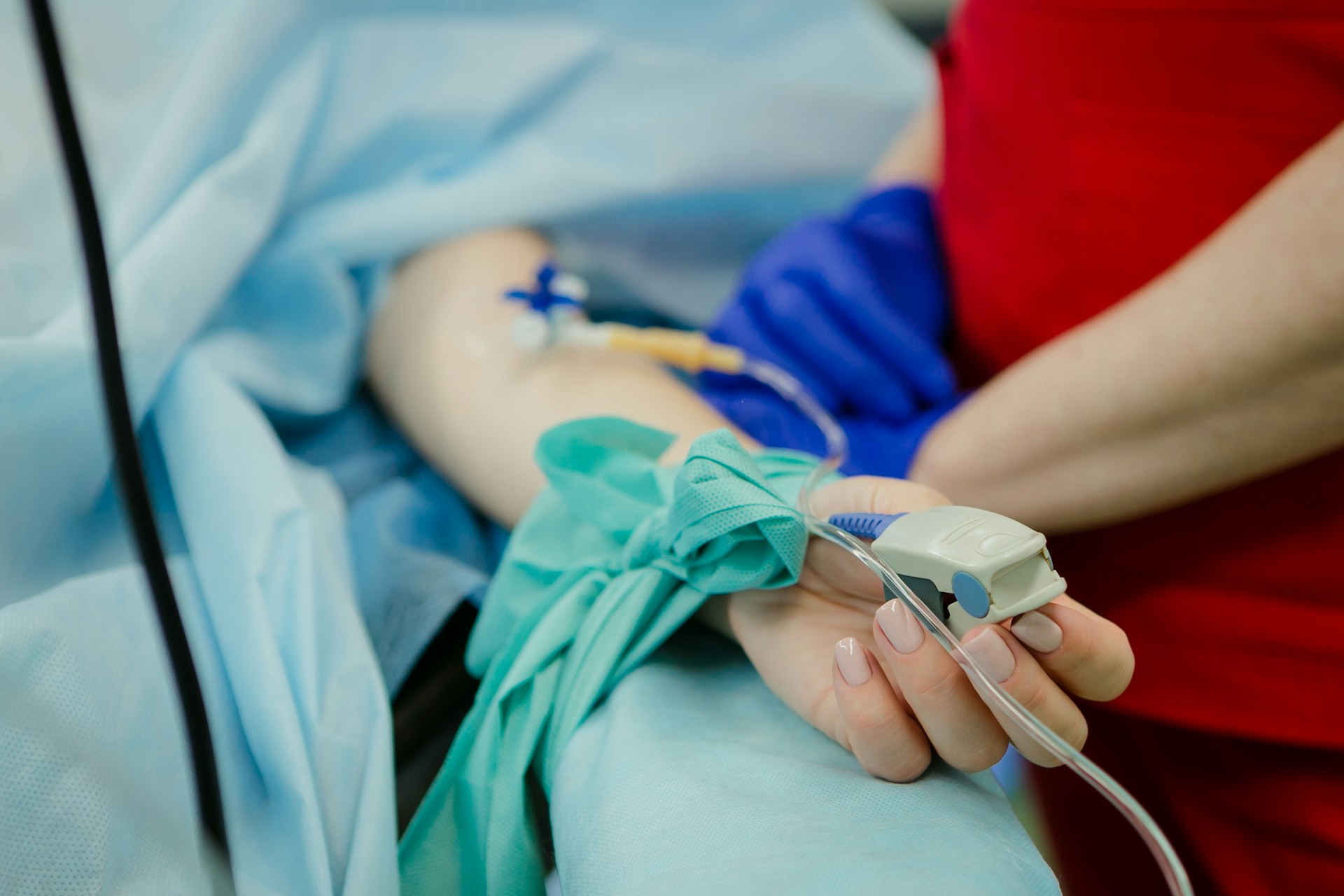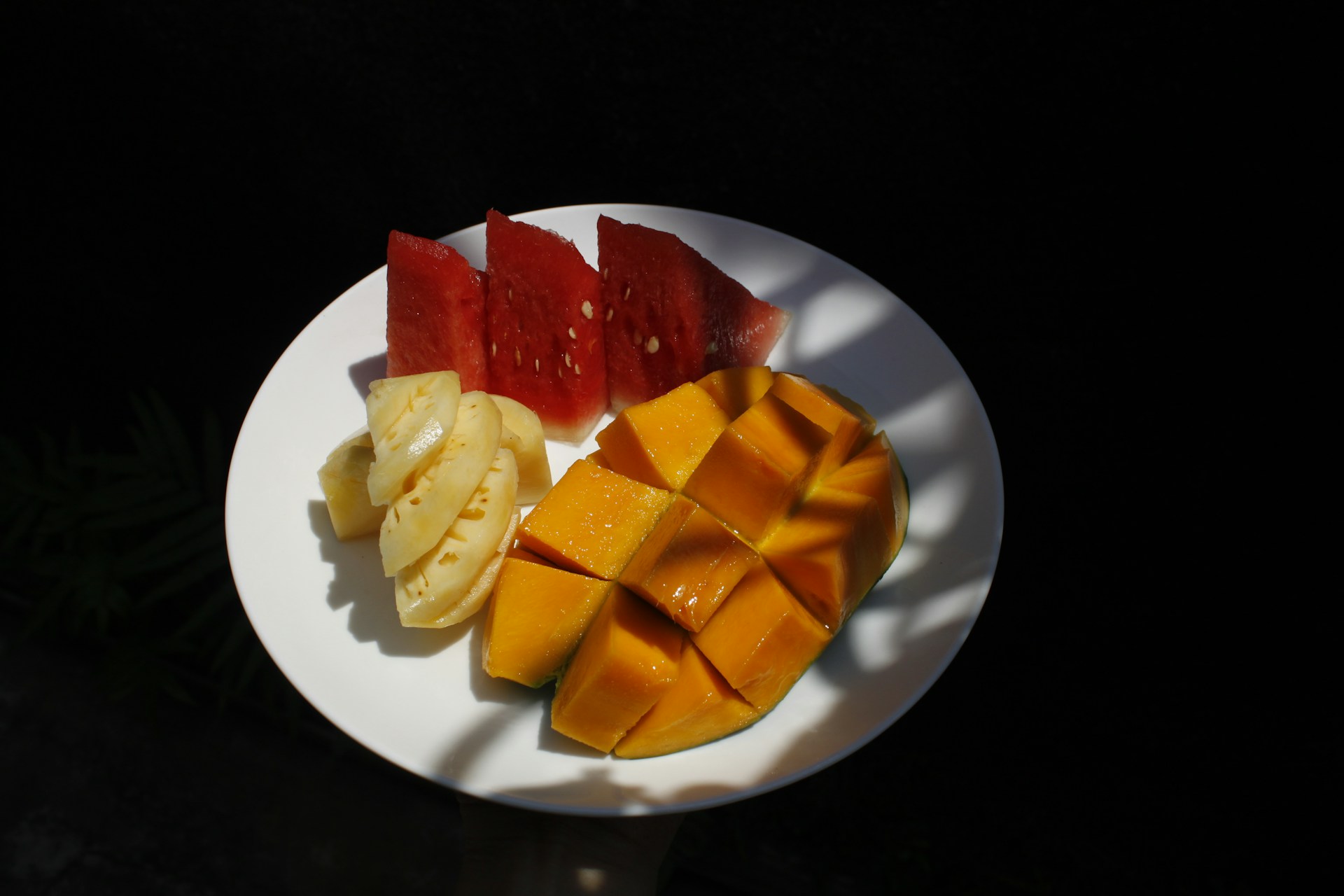Long-Term Consumption of High-Fat-High-Fructose Diet Decreased Insulin Sensitivity and Damaged the Islets of Langerhans on Sprague Dawley Rats
Konsumsi Diet Tinggi Lemak Tinggi Fruktosa dalam Jangka Panjang Menurunkan Sensitivitas Insulin dan Merusak Pulau Langerhans pada Tikus Sprague Dawley
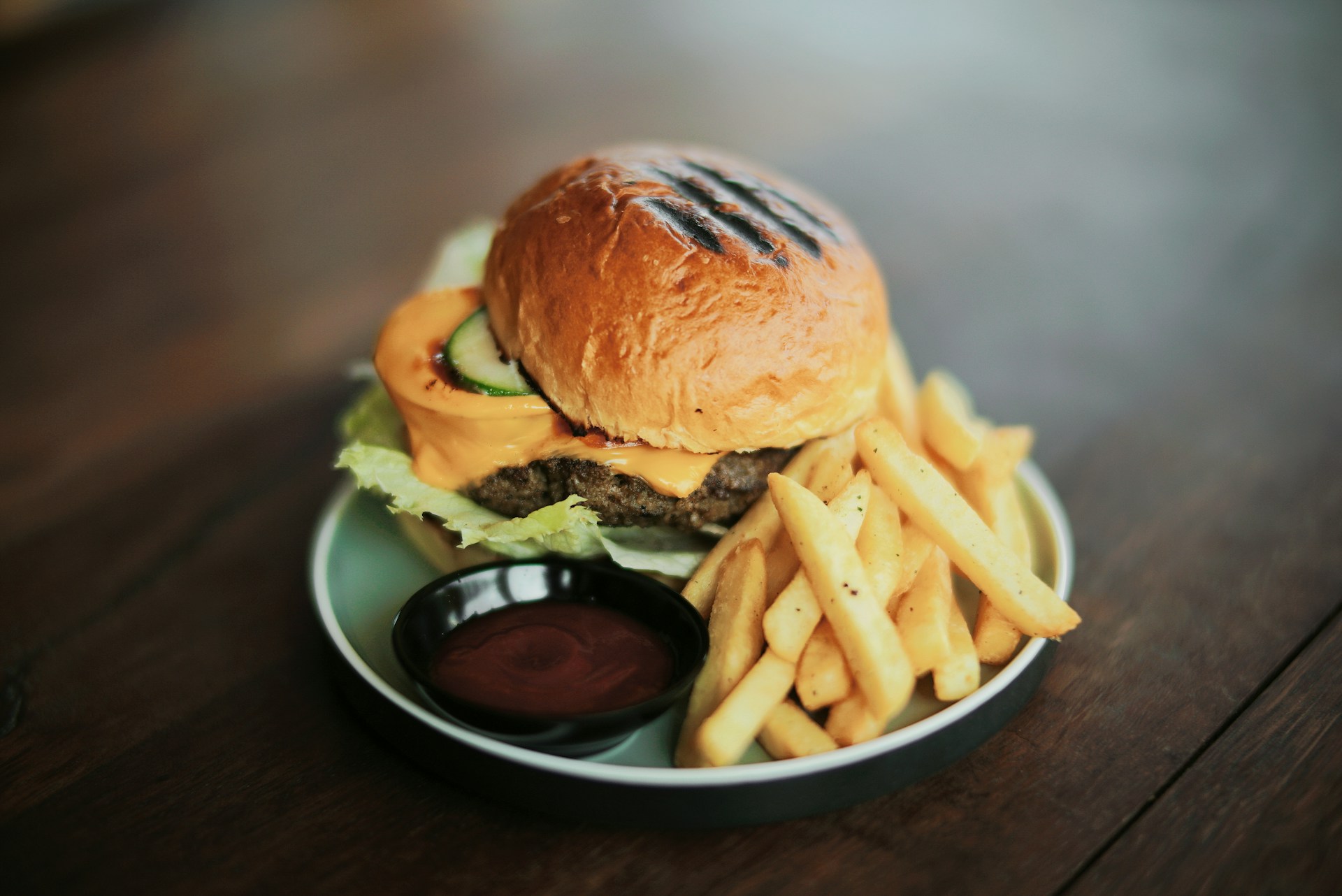
Background: Obesity is linked to the rising incidence of type 2 diabetes, with excessive dietary fat intake being one of the primary causes. The development of fat animal models has been discovered to be a standard experimental strategy based on replicating human behaviour in food consumption.
Objectives: This study aims to investigate how long-term consumption of a high-fat, high-fructose (HFHF) diet affects the indicators of diabetes mellitus in Sprague Dawley (SD) rats, such as insulin sensitivity, by measuring the HOMA-IR, counting beta cells, and analyzing the histology of the pancreas.
Methods: This experiment was conducted with 36 male SD rats in normal and HFHF groups. The normal groups had a modified AIN-93 M, while the HFHF group received a high-fat diet with 30% fructose-based water. Feed and beverage intakes were monitored every 24 hours to calculate daily caloric consumption (energy intake) for 17 weeks.
Results: The results demonstrated a significant difference between the normal and HFHF groups in the HOMA-IR levels (insulin sensitivity) and number of pancreatic beta cells (p-value<0.05). This implied that following 17 weeks of HFHF intake, the HOMA-IR level of insulin sensitivity was reduced. However, the islet of Langerhans in pancreatic histopathology seemed damaged in the HFHF rats, as evidenced by the changes in their shape and lower beta cell number.
Conclusions: Consuming the HFHF diet over an extended period increased glucose level, decreased insulin sensitivity, and damaged pancreatic histopathology.
Al-Goblan AS, Al-Alfi MA, Khan MZ. Mechanism linking diabetes mellitus and obesity. Diabetes, Metab Syndr Obes Targets Ther. 2014; 7: 587–91. https://doi.org/10.2147/DMSO.S67400
World Health Organization. World health statistics 2021, monitoring health for the SDGs. Vol. 7. 2021. 6 p. available from https://www.who.int/publications/i/item/9789240027053
Abdul M, Khan B, Hashim MJ, King JK, Govender RD, Mustafa H, et al. Epidemiology of type 2 diabetes – global burden of disease and forecasted trends. J Epidemiol Glob Health. 2020; 10: 107–11. https://doi.org/10.2991/jegh.k.191028.001
Kementerian Kesehatan Republik Indonesia. Laporan Nasional Riset Kesehatan Dasar. Kementeri Kesehat RI. 2018;1–582.
Pereira RM, Botezelli JD, da Cruz Rodrigues KC, Mekary RA, Cintra DE, Pauli JR, et al. Fructose consumption in the development of obesity and the effects of different protocols of physical exercise on the hepatic metabolism. Nutrients. 2017;9(4):1–21. https://doi.org/10.3390/nu9040405
Stanhope KL, Schwarz JM, Keim NL, Griffen SC, Bremer AA, Graham JL, et al. Consuming fructose-sweetened, not glucose-sweetened, beverages increases visceral adiposity and lipids and decreases insulin sensitivity in overweight/obese humans. J Clin Invest. 2009;119(5):1322–34. https://doi.org/10.1172/JCI37385
Alwahsh SM, Dwyer BJ, Forbes S, van Thiel DH, Starkey Lewis PJ, Ramadori G. Insulin production and resistance in different models of diet-induced obesity and metabolic syndrome. Int J Mol Sci. 2017; 18(2). https://doi.org/10.3390/ijms18020285
Alrouji M, Al-Kuraishy HM, Al-Gareeb AI, Alexiou A, Papadakis M, Saad HM, et al. The potential role of human islet amyloid polypeptide in type 2 diabetes mellitus and alzheimer’s diseases. Diabetol Metab Syndr. 2023; 15(1): 1–16. https://doi.org/10.1186/s13098-023-01082-1
Speakman J, Hambly C, Mitchell S, Król E. The contribution of animal models to the study of obesity. Lab Anim. 2008; 42(4): 413–32. https://doi.org/10.1258/la.2007.006067
Yang Y, Jr. DLS, Keating KD, Allison DB, Nagy TR. Variations in body weight, food intake and body composition after long-term high-fat diet feeding in C57BL/6J Mice. Obesity (Silver Spring). 2015; 22(10): 2147–55. https://doi.org/ 10.1002/oby.20811
Roza NAV, Possignolo LF, Palanch AC, Gontijo JAR. Effect of long-term high-fat diet intake on peripheral insulin sensibility, blood pressure, and renal function in female rats. Food Nutr Res. 2016; 60: 1–10. https://doi.org/ 10.3402/fnr.v60.28536
Huang BW, Chiang MT, Yao HT, Chiang W. The effect of high-fat and high-fructose diets on glucose tolerance and plasma lipid and leptin levels in rats. Diabetes, Obes Metab. 2004; 6(2): 120-6. https://doi.org/10.1111/j.1462-8902.2004.00323.x.
Lozano I, Van Der Werf R, Bietiger W, Seyfritz E, Peronet C, Pinget M, et al. High-fructose and high-fat diet-induced disorders in rats: Impact on diabetes risk, hepatic and vascular complications. Nutr Metab [Internet]. 2016; 13(1): 1–13. https://doi.org/10.1186/s12986-016-0074-1
The British Nutrition Foundation. Oils and Fats in the Diet. 2009.
Handayani D, Febrianingsih E, Kurniawati AD, Kusumastuty I, Nurmalitasari S, Widyanto RM, et al. High-fructose diet initially promotes increased aortic wall thickness, liver steatosis, and cardiac histopathology deterioration, but does not increase body fat index. J Public health Res. 2021; 10(2): 2181. https://doi.org/10.4081/jphr.2021.2181
Kusumastuty I, Sembiring F, Andarini S, Handayani D. High-fat-high-fructose diet decreases hippocampal neuron number in male rats. Indones Biomed J. 2020; 12(1): 1–7. https://doi.org/10.18585/inabj.v12i1.865
Antunes LC, Elkfury JL, Jornada MN, Foletto KC, Bertoluci MC. Validation of HOMA-IR in a model of insulin-resistance induced by a high-fat diet in Wistar rats 1. 2016; 60(2): 138-42. https://doi.org/10.1590/2359-3997000000169
Slaoui M, Fiette L. Histopathology procedures: from tissue sampling to histopathological evaluation. Methods Mol Biol. 2011; 691: 69-82. https://doi.org/10.1007/978-1-60761-849-2_4.
Bocarsly ME, Powell ES, Avena NM, Hoebel BG. High-fructose corn syrup causes characteristics of obesity in rats: Increased body weight, body fat and triglyceride levels. Pharmacol Biochem Behav. 2010; 97(1): 101–6. https://doi.org/10.1016/j.pbb.2010.02.012
Namekawa J, Takagi Y, Wakabayashi K, Nakamura Y, Watanabe A, Nagakubo D, et al. Effects of high-fat diet and fructose-rich diet on obesity, dyslipidemia and hyperglycemia in the WBN/Kob-Leprfa rat, a new model of type 2 diabetes mellitus. J Vet Med Sci. 2017 Jun 10; 79(6): 988-991. https://doi.org/10.1292/jvms.17-0136
Ferreira EDS, Silva MA, Demonte A, Neves VA. Soy β-conglycinin (7S globulin) reduces plasma and liver cholesterol in rats fed hypercholesterolemic diet. J Med Food. 2011; 14(1–2): 94–100. https://doi.org/10.1089/jmf.2009.0204
Hariri N, Thibault L. High-fat diet-induced obesity in animal models. Nutr Res Rev. 2010;23(2):270–99.
Licholai JA, Nguyen KP, Fobbs WC, Schuster CJ, Ali MA, Kravitz A V. Why do mice overeat high-fat diets? how high-fat diet alters the regulation of daily caloric intake in mice. Obesity (Silver Spring). 2018 Jun; 26(6): 1026-33. https://doi.org/10.1002/oby.22195
Engel MMS, Kusumastuty I, Anita KW, Handayani D. The effect of high fat high fructose diet (modification of ain-93m) on nuclear factor kappa beta expression in the liver tissue of male sprague dawley rats. J Phys Conf Ser [Internet]. 2019 Nov 1; 1374(1): 012042. https://doi.org/10.1088/1742-6596/1374/1/012042
Malafaia AB, Afonso P, Nassif N, Marcondes P, Ariede BL, Sue KN, et al. Obesity induction with high fat sucrose in rats. Arq Bras Cir Dig. 2013: 26 Suppl 1:17-21. https://doi.org/10.1590/s0102-67202013000600005
Kylie Kavanagh. Trans fat leads to weight gain even on same total calories, animal study shows. 2006. Available from: https://www.sciencedaily.com/releases/2006/06/060619133024.htm
Xu Y, Zhu W, Ge Q, Zhou X. Effect of different types of oil intake on the blood index and the intestinal flora of rats. AMB Express [Internet]. 2022; 12(1). https://doi.org/10.1186/s13568-022-01387-w
Kubant R, Poon AN, Sánchez-Hernández D, Domenichiello AF, Huot PSP, Pannia E, et al. A comparison of effects of lard and hydrogenated vegetable shortening on the development of high-fat diet-induced obesity in rats. Nutr Diabetes. 2015; 5(12):e188. https://doi.org/10.1038/nutd.2015.40.
Martire SI, Holmes N, Westbrook RF, Morris MJ. Altered feeding patterns in rats exposed to a palatable cafeteria diet: increased snacking and its implications for development of obesity. PLoS One. 2013; 8(4) :e60407. https://doi.org/ 10.1371/journal.pone.0060407
Reppucci CJ, Petrovich GD. Learned food-cue stimulates persistent feeding in sated rats. Appetite. 2012; 59(2): 437–47. https://doi.org/10.1016/j.appet.2012.06.007
Atrooz F, Alkadhi KA, Salim S. Understanding stress: Insights from rodent models. Curr Res Neurobiol. 2021; 2 (April): 100013. https://doi.org/10.1016/j.crneur.2021.100013
Chao, AM., Jastreboff, AM., White, MA., Grilo, CM., Sinha R. Stress, cortisol, and other appetite-related hormones: Prospective prediction of 6-month changes in food cravings and weight. Obes (Silver Spring). 2017; 25(4): 713–20. https://doi.org/10.1002/oby.21790
Mayasari, DR., Rahayuni, A. Pengaruh pemberian serbuk biji labu kuning (cucurbita moschata) terhadap penurunan kolesterol ldl pada tikus wistar hiperkolesterolemia. Journal of Nutrition College. 2014; 3: 432–9. Available Online: http://ejournal-s1.undip.ac.id/index.php/jnc
Suzanne Wakim & Mandeep Grewal. Digestion and Absorption. Available online: https://bio.libretexts.org/Bookshelves/Human_Biology/Human_Biology_(Wakim_and_Grewal)/18%3A_Digestive_System/18.3%3A_Digestion_and_Absorption.
Suzuki K, Jayasena CN, Bloom SR. Obesity and appetite control. Exp Diabetes Res. 2012: 2012: 824305. https://doi.org/10.1155/2012/824305
Fellmann L, Nascimento AR, Tibiriça E, Bousquet P. Murine models for pharmacological studies of the metabolic syndrome. Pharmacol Ther. 2013 Mar; 137(3): 331-40. https://doi.org/10.1016/j.pharmthera.2012.11.004
Feng H, Zhang S, Wan JMF, Gui L, Ruan M, Li N, et al. Polysaccharides extracted from Phellinus linteus ameliorate high-fat high-fructose diet induced insulin resistance in mice. Carbohydr Polym. 2018; 200: 144–53. https://doi.org/ 10.1016/j.carbpol.2018.07.086
D’Angelo G, Elmarakby AA, Pollock DM, Stepp DW. Fructose feeding increases insulin resistance but not blood pressure in Sprague-Dawley rats. Hypertension. 2005; 46(4): 806–11. https://doi.org/ 10.1161/01.HYP.0000182697.39687.34
Tappy L, Le KA. Metabolic effects of fructose and the worldwide increase in obesity. Physiol Rev [Internet]. 2010; 90(1): 23–46. https://doi.org/ 10.1152/physrev.00019.2009
Ozcan SG, Suna S, Inan S, Bagdas D, Tamer Ce, Copur OU, et al. Effects of long-term consumption of high fructose corn syrup containing peach nectar on body weight gain in sprague dawley rats. Food Sci Technol. 2016; 37 (2). https://doi.org/10.1590/1678-457X.25416
Shawky NM, Shehatou GSG, Abdel Rahim M, Suddek GM, Gameil NM. Levocetirizine ameliorates high fructose diet-induced insulin resistance, vascular dysfunction and hepatic steatosis in rats. Eur J Pharmacol [Internet]. 2014; 740: 353–63. https://doi.org/10.1016/j.ejphar.2014.07.021
Malta A, Saavedra LPJ, Raposo SR, Lopes GKG, Fernandes MD, Barbosa LF, et al. Impact of dietary sugars on β-Cell function. Diabetology. 2023; 4(2): 178–83. https://doi.org/10.3390/diabetology4020017
Tranchida F, Tchiakpe L, Rakotoniaina Z, Deyris V, Ravion O, Hiol A. Long-term high fructose and saturated fat diet affects plasma fatty acid profile in rats. J Zhejiang Univ Sci B. 2012 Apr; 13(4): 307-17. https://doi.org/10.1631/jzus.B1100090
Ed A, Km OS, Ramasamy R. Insulin resistance : metabolic mechanisms and consequences in the heart . Arterioscler Thromb Vasc Biol. 2012 Sep; 32(9): 2068–2076. https://doi.org/10.1161/ATVBAHA.111.241984
Silva SB, Sarmento IB, bargut TCL, Suuza-Mello V, et al. Animal models of nutritional induction of type 2 diabetes mellitus. Int J Morphol. 2014; 32(1): 279–93. https://doi.org/10.4067/S0717-95022014000100046
Singh Y, Garg MK, Tandon N, Marwaha RK. A Study of insulin resistance by HOMA-IR and its cut-off value to identify metabolic syndrome in urban Indian adolescents. JCRPE J Clin Res Pediatr Endocrinol. 2013; 5(4): 245–51. https://doi.org/10.4274/Jcrpe.1127
Saltiel AR, Olefsky JM. Inflammatory mechanisms linking obesity and metabolic disease. J Clin Investig. 2017; 127(1): 4–7. https://doi.org/ 10.1172/JCI92035
Lablanche S, Cottet-Rousselle C, Lamarche F, Benhamou PY, Halimi S, Leverve X, et al. Protection of pancreatic INS-1 β-cells from glucose- and fructose-induced cell death by inhibiting mitochondrial permeability transition with cyclosporine A or metformin. Cell Death Dis. 2011; 2(3): 1–6. https://doi.org/10.1038/cddis.2011.15
Pessin JE, Saltiel AR. Signaling pathways in insulin action: Molecular targets of insulin resistance. J Clin Invest. 2000; 106(2): 165–9. https://doi.org/10.1172/JCI10582
Lustig RH. The fructose epidemic. The Bariatrician. 2009;Spring(1):10–9.
M M S Engel, I Kusumastuty, K W Anita and D Handayani. The effect of high fat high fructose diet ( modification of ain-93m ) on nuclear factor kappa beta expression in the liver tissue of male sprague dawley rats the effect of high fat high fructose diet ( modification of ain-93m ) on nuclear factor kappa bet. J. Phys.: Conf. Ser. 2019; 1374: 012042. https://doi.org/10.1088/1742-6596/1374/1/012042
Mutiyani M, Soeatmadji DW, Sunindya BR. Efek diet tinggi karbohidrat dan diet tinggi lemak terhadap kadar glukosa darah dan kepadatan sel beta pankreas pada tikus wistar. Indones J Hum Nutr. 2014; 1(2): 106–13. Available from: https://ijhn.ub.ac.id/index.php/ijhn/article/view/106/0
Copyright (c) 2025 Amerta Nutrition

This work is licensed under a Creative Commons Attribution-ShareAlike 4.0 International License.
AMERTA NUTR by Unair is licensed under a Creative Commons Attribution-ShareAlike 4.0 International License.
1. The journal allows the author to hold the copyright of the article without restrictions.
2. The journal allows the author(s) to retain publishing rights without restrictions
3. The legal formal aspect of journal publication accessibility refers to Creative Commons Attribution Share-Alike (CC BY-SA).
4. The Creative Commons Attribution Share-Alike (CC BY-SA) license allows re-distribution and re-use of a licensed work on the conditions that the creator is appropriately credited and that any derivative work is made available under "the same, similar or a compatible license”. Other than the conditions mentioned above, the editorial board is not responsible for copyright violation.






